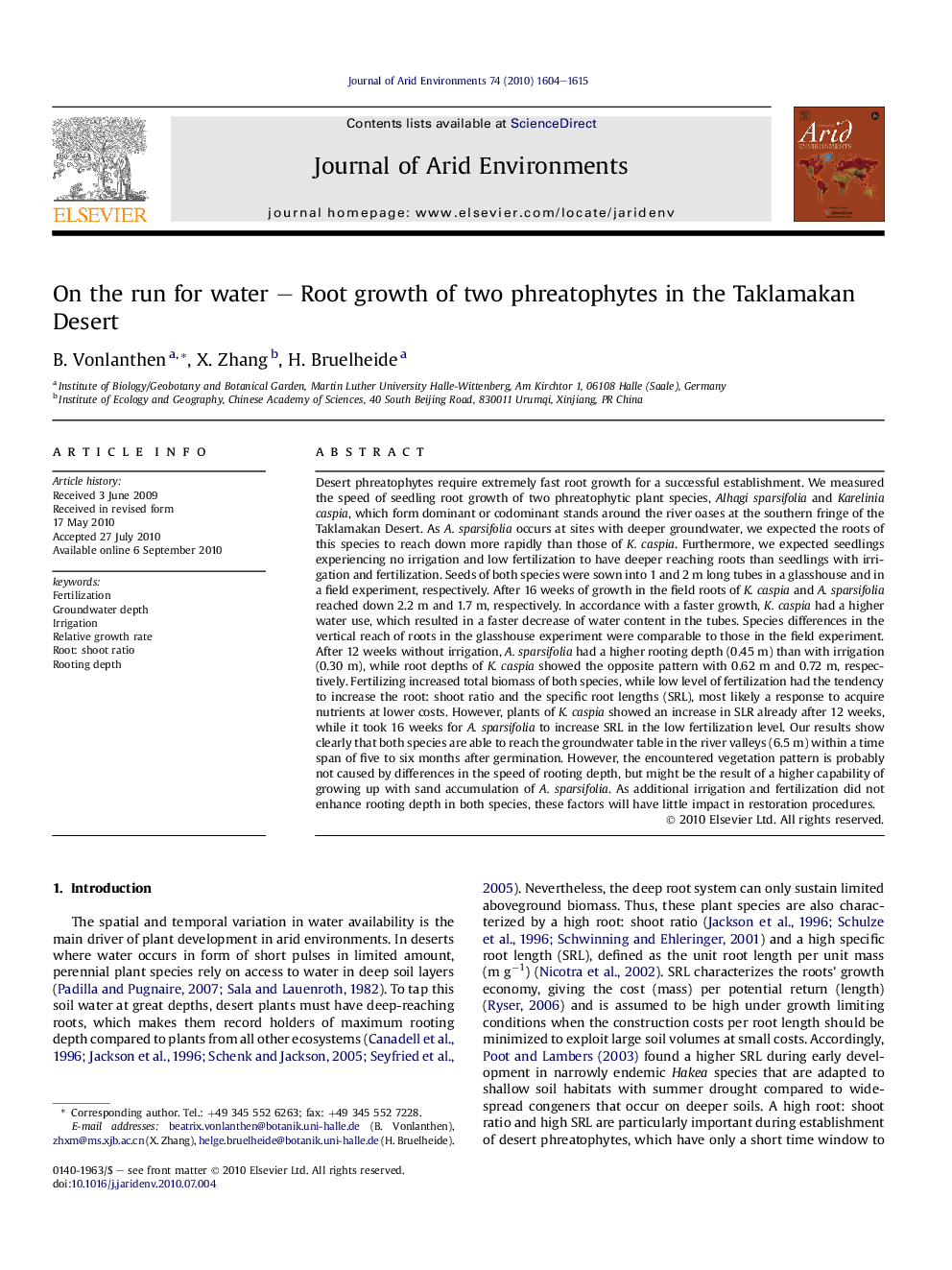| کد مقاله | کد نشریه | سال انتشار | مقاله انگلیسی | نسخه تمام متن |
|---|---|---|---|---|
| 4393979 | 1305512 | 2010 | 12 صفحه PDF | دانلود رایگان |

Desert phreatophytes require extremely fast root growth for a successful establishment. We measured the speed of seedling root growth of two phreatophytic plant species, Alhagi sparsifolia and Karelinia caspia, which form dominant or codominant stands around the river oases at the southern fringe of the Taklamakan Desert. As A. sparsifolia occurs at sites with deeper groundwater, we expected the roots of this species to reach down more rapidly than those of K. caspia. Furthermore, we expected seedlings experiencing no irrigation and low fertilization to have deeper reaching roots than seedlings with irrigation and fertilization. Seeds of both species were sown into 1 and 2 m long tubes in a glasshouse and in a field experiment, respectively. After 16 weeks of growth in the field roots of K. caspia and A. sparsifolia reached down 2.2 m and 1.7 m, respectively. In accordance with a faster growth, K. caspia had a higher water use, which resulted in a faster decrease of water content in the tubes. Species differences in the vertical reach of roots in the glasshouse experiment were comparable to those in the field experiment. After 12 weeks without irrigation, A. sparsifolia had a higher rooting depth (0.45 m) than with irrigation (0.30 m), while root depths of K. caspia showed the opposite pattern with 0.62 m and 0.72 m, respectively. Fertilizing increased total biomass of both species, while low level of fertilization had the tendency to increase the root: shoot ratio and the specific root lengths (SRL), most likely a response to acquire nutrients at lower costs. However, plants of K. caspia showed an increase in SLR already after 12 weeks, while it took 16 weeks for A. sparsifolia to increase SRL in the low fertilization level. Our results show clearly that both species are able to reach the groundwater table in the river valleys (6.5 m) within a time span of five to six months after germination. However, the encountered vegetation pattern is probably not caused by differences in the speed of rooting depth, but might be the result of a higher capability of growing up with sand accumulation of A. sparsifolia. As additional irrigation and fertilization did not enhance rooting depth in both species, these factors will have little impact in restoration procedures.
Research highlights
► Seedlings of desert phreatophytes can attain rooting depths of more than 2 m within 16 weeks.
► Irrigation and fertilization did not accelerate rooting depth of phreatophytes.
► Species specific differences in speed of rooting depth do not explain the vegetation pattern.
► High rates of root growth allows the species to reach groundwater within 5 to 6 months.
Journal: Journal of Arid Environments - Volume 74, Issue 12, December 2010, Pages 1604–1615